I'm no idiot. I'm just a dreamer.
I knew the recent Apple event (the highlights from which you can catch up with in our Apple March Event round up ) was going to most likely be all about Apple's iPhone SE 3 , perhaps a new Mac Studio edition, and a souped-up iPad Air 5 . And that all proved to be right on the nose, along with the reveal of a new Studio Display and M1 Ultra chipset .
But more than anything I'd still love to see a new HomePod launched.
Because, now even more so than when the original HomePod launched back in 2017, the time is right for a high-end smart speaker. And Apple finally has all the puzzle pieces to make it rock – with spatial audio at its heart.
An uncharacteristically quiet launch
When the HomePod was first revealed in 2017, after many months of rumors and pre-release hype, it eventually landed in shops in February 2018 with a little plop rather than a cannonball splash, a whimper rather than a cheer.
It's not that the smart speaker wasn't good (even if it did have some issues, which we'll discuss). It was simply too expensive.
Aimed at the audiophile end of the market with its focus on well-defined acoustics, its $349 / £319 price tag was out of reach of the sort of customer who wanted a smart, all-in-one speaker setup.
Compare that to the Amazon Echo – available in configurations that can be bought for as little as $50, and far cheaper in Amazon's regular Prime Day sales – and Apple had quite a problem on its hands.
It couldn't attract those wanting the pocket-money simplicity of an Echo, whose Alexa voice assistant made it a very capable interactive jukebox, and yet it wasn't quite up to the exacting standards of audiophiles who meticulously put together receivers, cables and speakers to build their ultimate audio setups, which would struggle to accommodate Apple's speaker.
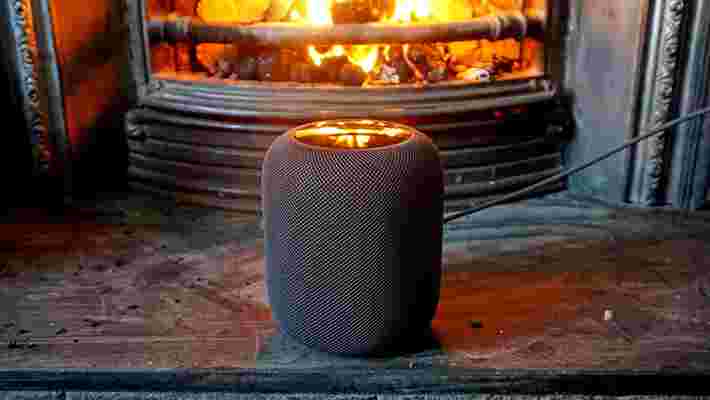
Apple's HomePod sounded the part – its automatic acoustic calibration system meant that it could intelligently tune itself to its surroundings, and deliver detailed, room filling sound.
But for every high note it hit, it lost a beat elsewhere; Siri wasn't good enough to handle more complex voice commands and queries, its silicone base was known to damage wooden surfaces , and its use as a smart home hub was limited by a lack of third party support.
To complicate matters, Amazon would eventually launch the Amazon Echo Studio , a similarly premium-positioned smart speaker, in September 2019, weaving seamlessly into the existing Alexa smart home ecosystem at around two thirds the price of the HomePod.
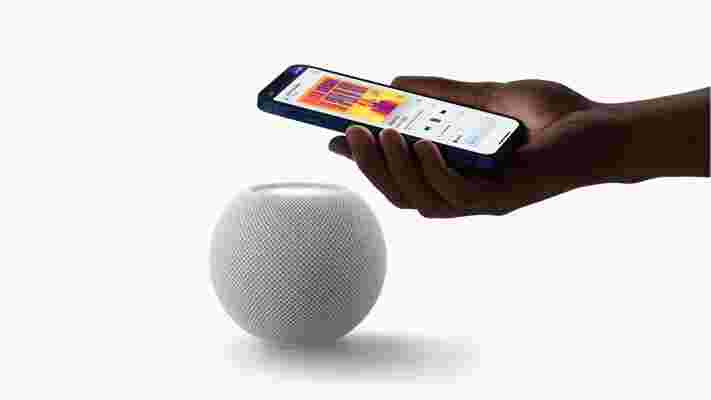
The writing started to feel like it was on the wall by the time the HomePod Mini arrived in September 2020, offering similar functionality to the HomePod in a more compact, cheaper package, and by March 2021 the original HomePod was discontinued altogether.
The rise of spatial audio
The sad fact is that the HomePod had one feature in particular that the HomePod Mini hasn't picked up the slack for – spatial audio . And in 2022, spatial audio is finally coming into its own as a format worth investing in.
In June 2021, Apple finally added spatial audio to its Apple Music library . The multidimensional mix uses Dolby Atmos processing to make it feel as if sound is coming from all around the listener, putting you in the heart of the recording.
And while existing full-sized HomePod users can take advantage of it, it's now impossible to buy a new HomePod that supports the feature, resigning the feature to earphone listeners.
Alongside lossless audio support, it makes the original HomePod a really compelling smart speaker in terms of audio quality and feature sets.

And that's a real shame. Just read Olivia Tambini's piece on the transformative effect of hearing The Beatles in spatial audio for the first time . Our Senior Editor for Home Entertainment said that:
"Dolby Atmos mixes don't work for every album, and can sometimes sound a bit artificial - but it works so, so well for Abbey Road. It's an album that has so much dynamic contrast, and scales everything from a simple voice with guitar to huge orchestral numbers.
"Placing all those different elements in a virtual sphere opens the mix up - and for an album recorded in the late sixties, it sounds remarkably modern in its production."
Those with the money to invest in the original HomePod twice while it still existed also can benefit from using the HomePod in a stereo pair, and connect both to an Apple TV 4K as a very capable AV speaker system, too.
As with spatial audio music tracks, there's now a plethora of movies and TV shows that support Dolby Atmos, with basically every major release now supporting the cinematic sound system.
In terms of functionality, only the Amazon Echo Studio, and select Sonos configurations, can compete. And while Amazon used to renew its Echo speakers on an almost-annual cycle, it hasn't touched its Studio speakers since their 2019 release.
There may be a new Amazon speaker waiting in the wings, but for the time being, there's a gap in the market.
Will we ever get a new HomePod?
Thanks to the success of the HomePod Mini, which Apple reportedly shipped 4 million units of in the third quarter of 2021, the HomePod idea is finally seeing Apple claw back some market share in the smart speaker space.
As a result, the line-up lives to fight another day, and could, to this dreamer's delight, even expand.
Apple's also missing on a trick in terms of the smart screen market, where devices like the Amazon Echo Show combine a speaker and a tablet into one tabletop device.
With the strength of the iPad ecosystem, you'd think this would be an easy smart home sell for Apple, and noted Apple journalist and analyst Mark Gurman of Bloomberg believes there could be an answer to the rotating Echo Show 10 in the works in Cupertino.
Gurman states that Apple may be looking to combine its smart speaker and Apple TV 4K devices into one package. Whether that's in the form of some sort of smart soundbar or more of a smart display kind of device, remains to be seen. But Gurman also believes that a mid-sized HomePod, larger than the mini but smaller than the original, will soon see the light of day, too.
Either way, there's potential in a resurrected, full size HomePod. Apple rarely makes missteps with product launches, and to my mind was too quick to kill off a full sized HomePod. With some softening of its price point, and a greater emphasis on spatial audio, I believe a new HomePod could really sing.
Samsung Galaxy S22 vs Xiaomi 12: which mini-flagship stands tallest?
Flagship phones have generally been getting bigger and bolder over the years, but the Xiaomi 12 and Samsung Galaxy S22 epitomize a new emerging trend.
These handsets continue to pack flagship-level features and components, but they do so in surprisingly compact form factors, and with slightly lower price tags to boot.
The only question that really matters here is, which pint-sized flagship phone is best? For a full verdict on each phone, check out our detailed reviews linked above, but below we've can taken a deep dive into their relative specifications.
Xiaomi 12 vs Samsung Galaxy S22 price and availability
The Xiaomi 12 hit its home Chinese market on December 31. A global launch was announced on March 15, and we’re expecting to see the phone hit the UK sometime in April.
There won’t be a US launch for the phone, which makes the company’s choice to supply US pricing more than a little confusing. Prices will start from $749 (about £570, AU$1,030), for what it’s worth.
The Samsung Galaxy S22 was announced on February 9, 2022. Prices start from $799 / £769 / AU$1,249 for the 128GB model, and move up to $849 / £819 / AU$1,349 for 256GB.
As you can see, the Xiaomi 12 is set to undercut the Samsung Galaxy S22 by around $50, although they’re clearly in the same ballpark.
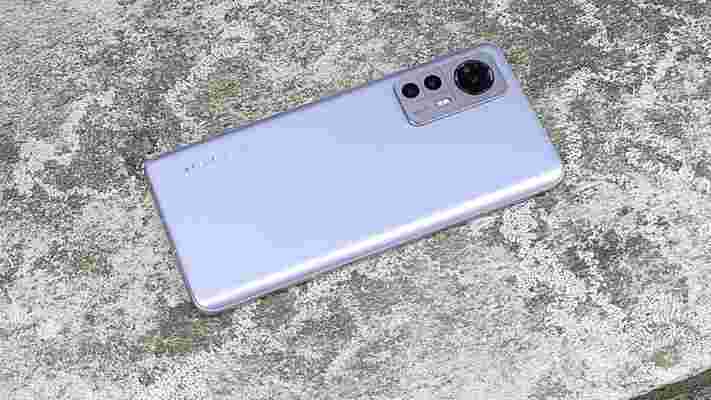
Design
Both phones are among the smallest Android flagships on the market. The Xiaomi 12 measures 152.7 x 69.9 x 8.2mm, while the Samsung Galaxy S22 comes in at 146 x 70.6 x 7.6mm.
Samsung’s phone is the smaller of the two overall, then. It’s also quite a bit lighter, at 168g rather than 179g.
We’d also probably give the nod to the Galaxy S22 on the design front. Its ‘Contour Cut’ camera module beautifully melds into a slightly squared-off metal frame. It looks quite distinctive, unless it’s sat alongside last year’s Galaxy S21 , which pioneered the look.
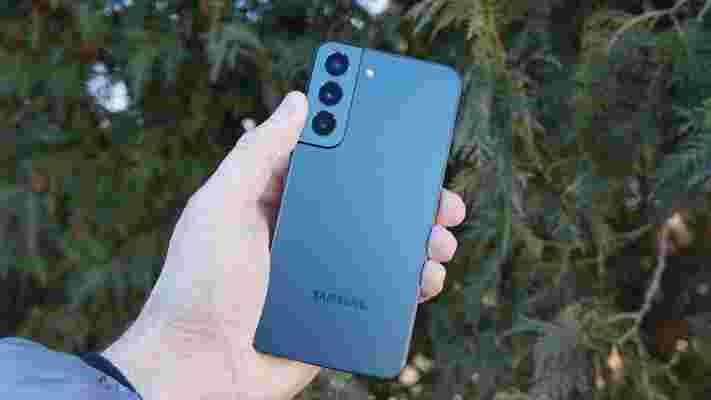
Whatever the case, it’s more special-looking than the Xiaomi 12, which has stepped back from the Xiaomi Mi 11 ’s appealingly stand-out design. Sure, there’s a certain minimalistic appeal to its matte finish and industrial camera module, but the basic shape is all too familiar.
The Xiaomi 12 has a curved display rather than the Galaxy S22’s flat display, which is likely to divide opinion. In general, we prefer flatter displays, as they lead to fewer false presses and visual distortions.
Display
The Xiaomi 12 screen measures 6.28 inches across, while the Galaxy S21 has a 6.1-inch display. The Xiaomi 12 screen is the bigger of the two, then.
Both screens pack 2400 x 1080 (FHD+) resolutions, both use OLEDs, and both benefit from slick 120Hz refresh rates.
Samsung’s screen gets a little brighter, with a peak output of 1300 nits. The Xiaomi 12 can push to only 1100 nits, although that’s far from dim.
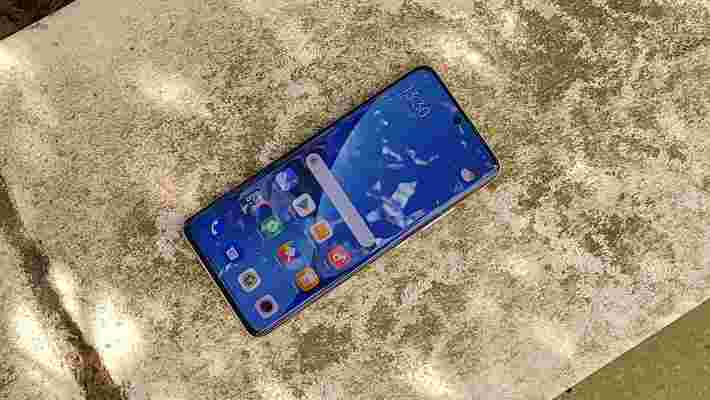
We won’t know which is the better display until we’ve spent more time with both phones. All we’ll say right now is that Samsung has an advantage in any screen competition, since it makes the vast majority of mobile OLED panels on the market.
Camera
Both phones deliver triple-camera systems, and that isn’t where the similarities end.
The main Xiaomi 12 camera is a 50-megapixel wide sensor with an f/1.9 aperture. The Galaxy S22 also offers a 50-megapixel main sensor, but with a slightly wider f/1.8 aperture. Both phones utilize pixel binning to achieve clearer results.
With the ultra-wide, the Xiaomi 12 gives you a 13-megapixel 123-degree sensor with an f/2.4 aperture, while the Samsung Galaxy S22 gives you a 12-megapixel 120-degree ultra-wide with an f/2.2 aperture. The Xiaomi’s lens is slightly wider, but the Samsung’s sensor is larger and brighter.
The real difference here is with that third sensor. The Xiaomi 12 includes a 5-megapixel ‘telemacro’ for extreme close-ups, while the Galaxy S22 comes with a proper 10-megapixel 3x telephoto. Samsung wins on the zoom front, then.
The Samsung Galaxy S22 front camera is a 10-megapixel sensor, while the Xiaomi 12 lays on a more impressive-sounding 32-megapixel sensor. Whether the latter equates to better selfies remains to be seen, however.
Specs and performance
Both of these phones run on Qualcomm’s Snapdragon 8 Gen 1 chip, although that won’t be the case with every Galaxy S22. As is usual for Samsung, the global model of its flagship phone runs on the company’s custom Exynos chip.
In this case, it’s the Exynos 2200, which represents the first fruits of a partnership with GPU giant AMD. You might expect superior gaming performance as a result, but our early experience suggests that the Snapdragon 8 Gen 1 is faster all-round.
We’re not claiming a massive performance gap here, mind. These are two fast 2022 flagships, and it will be difficult to make either phone sweat.
Elsewhere, the Galaxy S22 is supported by 8GB of RAM, while the Xiaomi 12 offers two options: either 8 or 12GB of RAM. Both come with either 128GB or 256GB of storage.
Battery
As you might expect given the size and weight difference, the Xiaomi 12 packs the larger battery of the two handsets. In fact, at 4,500mAh it’s considerably more capacious than the Galaxy S22’s 3700mAh cell.
How that translates to real-world stamina remains to be seen, but it’s difficult to see how the Galaxy S22 is going to win this one. Its screen is only slightly smaller, while it also gets brighter in direct sunlight.
Neither of the predecessors for these phones were particularly impressive when it comes to stamina, so the jury’s out in both cases.
We can already call a winner when it comes to the charging provisions, though. The Xiaomi 12 packs in a healthy 67W charger that’s reportedly capable of powering up the phone from 0 to 100% in just 39 minutes. The Samsung Galaxy S22, by contrast, only supports up to 25W charging – and it doesn’t supply a brick in the box.
There’s a similar advantage in the wireless charging stakes, with the Xiaomi 12 supporting 50W, and the Galaxy S22 only supporting 15W.
Takeaway
There seems little doubt that Xiaomi is adopting the Samsung approach by shrinking its flagship entry point this year. The Xiaomi 12 is smaller than ever, and looking to undercut the Galaxy S22 on price.
Samsung has done some shrinking of its own, and the Galaxy S22 comes in an even more compact package than its rival. There’s that price difference, though.
It’s partially explained by the presence of a dedicated telephoto lens in the Galaxy S22. The Xiaomi 12 sacrifices this fundamental flagship feature, which could prove telling.
Otherwise, the specs are largely similar, and we gave each phone a four-star review, so there's not much between them.
Nintendo Switch OLED burn-in isn't a problem, even after 3,600 hours
The Nintendo Switch OLED appears to be almost immune to burn-in, as a YouTuber’s extreme stress test has proven.
Back in January, we reported that YouTuber Wulff Den had deliberately left his Switch OLED running for over 1800 hours to determine how far the console’s screen can be pushed before exhibiting signs of burn-in.
The stress test involved leaving a static screenshot of The Legend of Zelda: Breath of the Wild on screen, at full brightness, for all hours of the day. After 2,000 hours, there were still no noticeable signs of burn-in, leading Wulff Den to conclude that “OLED burn-in should not be a concern. I don’t think it’s a practical concern for anybody.”
However, it appears that the Switch OLED panel can indeed suffer from burn-in – but it took a staggering 150 days before any image retention was visible.
Wulff’s latest video shows that after 3,600 hours some small “ghosting” has appeared on the panel and these outlines can be visible during gameplay or when viewing particular colors like orange and purple.
Once again, though, Wulff stresses that you really don’t need to worry about burn-in on the Switch OLED.
“This took me 3,600 hours to get to this point, and it’s been on this screen the whole time at full blast,” says Wulff. “That will take somebody years to do in one particular game, and again, that game needs a UI element that doesn’t move on the screen. That particular element needs to be on the screen for at least 3,600 hours to see even a little modicum of ghosting.”
Wulff’s not finished with his Switch OLED burn-in test, however. The YouTuber plans to keep the Switch running to see whether burn-in will become so prevalent that the system will be “unplayable”. Judging by these latest results, we could be waiting for quite some time before it gets to that point – if at all.
Interestingly, despite having the Switch running at full blast since launch, the console’s battery hasn’t deteriorated. A Twitch viewer asked Wulff to test the battery seeing that the console has been on charge for six months, and Wulff said the console died after about eight hours on full brightness. Not bad.
Analysis: burn-in is becoming less of a concern
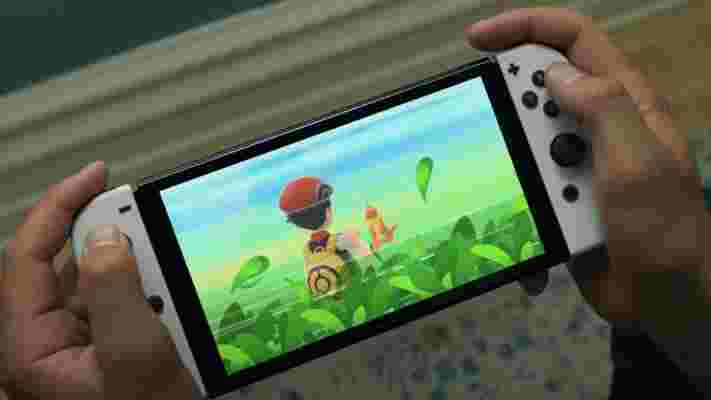
One of the few concerning elements of owning an OLED TV is the risk of burn-in, which can occur when a static image is displayed for a prolonged period of time. This can lead to image retention or ghosting, which is where you can see the same static image when viewing different content.
When playing video games, burn-in becomes more of a concern due to the fact static images often appear on screen for a long period of time, like HUDs and UI information. If you play one game over and over again for countless hours at a time, then, there’s a chance that these particular elements could become visible when viewing other content.
Thankfully, most OLED TVs are now equipped to combat burn-in incredibly well. Technologies in LG OLED TVs , like pixel shifting and luminance brightness, help mitigate the risk of burn-in extremely effectively, and you can also run a pixel refresher if you ever spot any image retention issues.
It’s comforting to know that the Nintendo Switch OLED is practically immune to burn-in, then, particularly for those who play exclusively in handheld mode. OLED technology has improved dramatically in recent years, to the point where burn-in should only worry those who leave their TV running 24 hours a day and display the same content regularly that includes a lot of static content.
For everyone else, as long as you take the necessary precautions – like turning off your TV when you’re finished and watching a variety of different content – there’s very little to worry about.